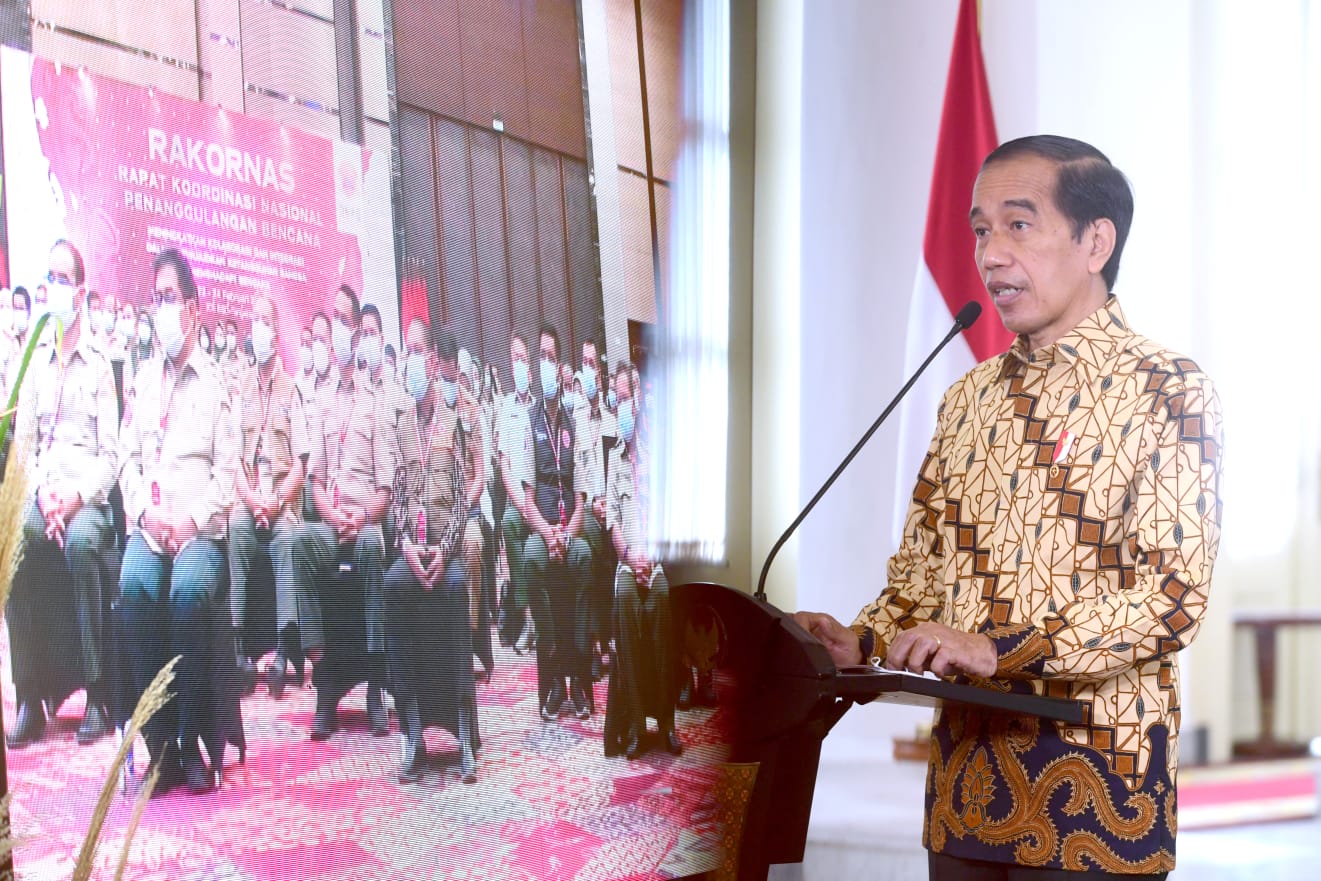President Jokowi Underscores Five Measures to Push for BNPB Transformation

President Jokowi virtually opens the 2022 National Coordination Meeting of Disaster Management from the Bogor Presidential Palace, West Java province, Wednesday (02/23). (Photo by: BPMI of Presidential Secretariat/Muchlis Jr)
President Joko “Jokowi” Widodo encouraged the National Disaster Management Agency (BNPB) to transform to create Indonesia that is resilient to disasters.
“As one of the main pillars of disaster management, BNPB must always improve itself,” the President said when opening the 2022 National Coordination Meeting of Disaster Management virtually from the Bogor Presidential Palace, West Java province, Wednesday (02/23).
Furthermore, President Jokowi underscored five measures for transformation within the BNPB.
First, the BNPB must have an alert, anticipative, responsive, and adaptive work culture.
“This culture is vital because disasters come unexpectedly. They come suddenly, even disasters that were unimaginable before, one of which is the COVID-19 pandemic. We have to handle all the unexpected to minimize the risk to the communities, nation, and state,” he said.
Second, the BNPB must prioritize disaster prevention efforts. The President stated that floods and landslides can be prevented, among others, by doing reforestation, environmental conservation, and deepening rivers and waterways.
“We know that some types of disasters, such as earthquakes and volcanic eruptions cannot be prevented beforehand, but many types of disasters can be reduced, can be partially prevented. This must be done in synergy between the BNPB and related ministries/institutions, including regional governments and the communities,” he said.
Third, infrastructure improvement to reduce disaster risk. This, said the President, must be jointly done between the Government and the communities.
“Evacuation routes must be ready, early warning instruments must be upgraded and checked regularly. This is where we are often not strict, check regularly. I know that not all of these instruments are procured by the BNPB, but I want the BNPB to get involved and remind relevant ministries/institutions to carry out their duties because once again, this concerns the safety of the people,” he said.
In addition, the President also encouraged the planting of vegetation to anticipate the impacts of climate change.
“I think mangroves and associated plants such as nipa palm, coastal pine, casuarina which are associated with sea hibiscus, ketapang (Terminalia catappa), nyamplung (Calophyllum inophyllum), and coconuts should be planted more in coastal areas where there are many [potentials of] tsunamis or typhoon disasters. We must continue to plant them,” he added.
Fourth, the BNPB must actively invite all central and regional government officials so that all development programs must be disaster-resilient oriented, including in terms of business licensing and infrastructure development.
“Everyone has to be invited. To issue business permits, we need to consider disaster risks. Infrastructure development must reduce disaster, not increase disaster risks. Often, we just build and forget about this. The mainstreaming of disaster-resilient policies must continue to be improved,” the President stated.
Fifth, the President encouraged the BNPB to establish a sustainable disaster education system, especially in disaster-prone areas. He highlighted the importance of disaster education and a culture of disaster awareness starting from an early age from every individual, family, community, to school.
“Explore various local wisdom in the communities, train the communities to respond to disasters. Do disaster exercises any time, don’t wait until disaster strikes,” he remarked. (TGH/UN) (FI/MUR)








